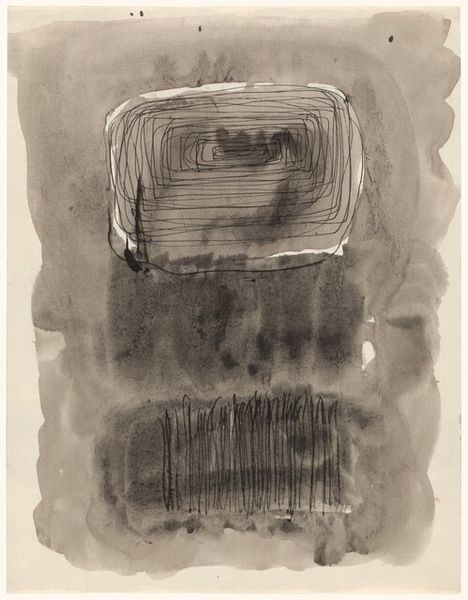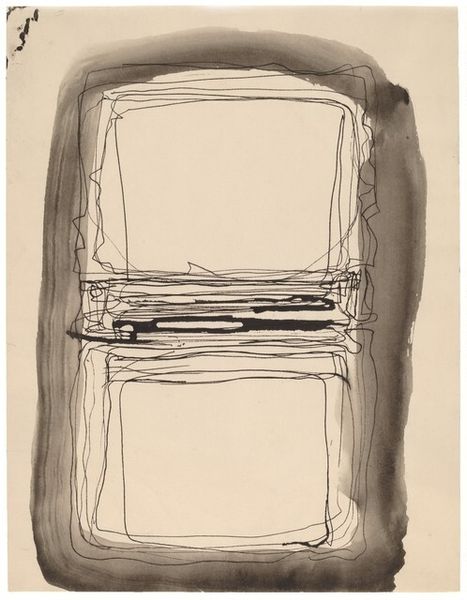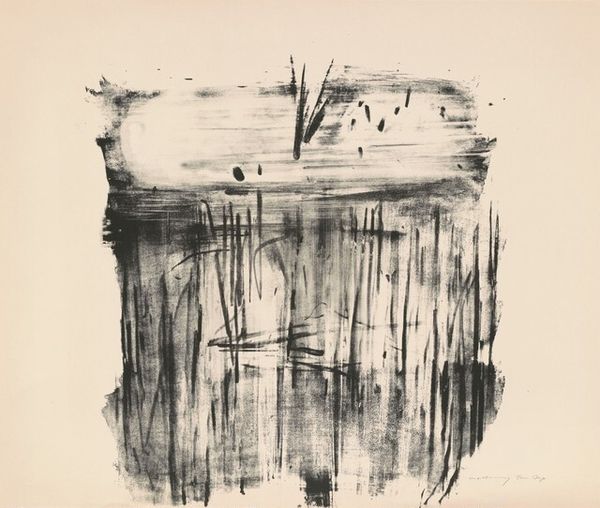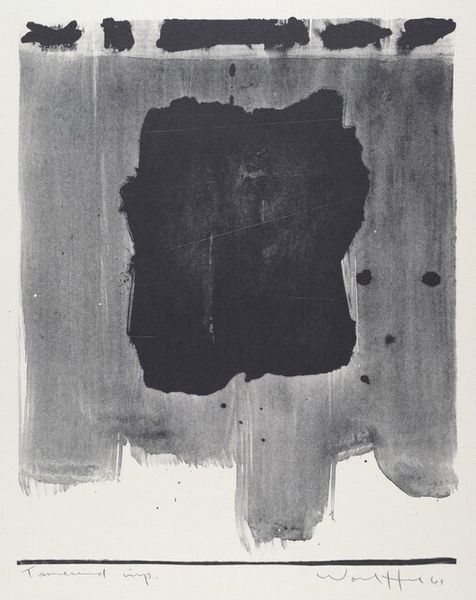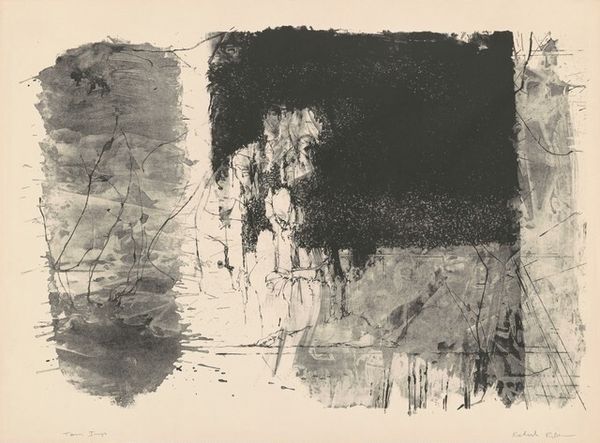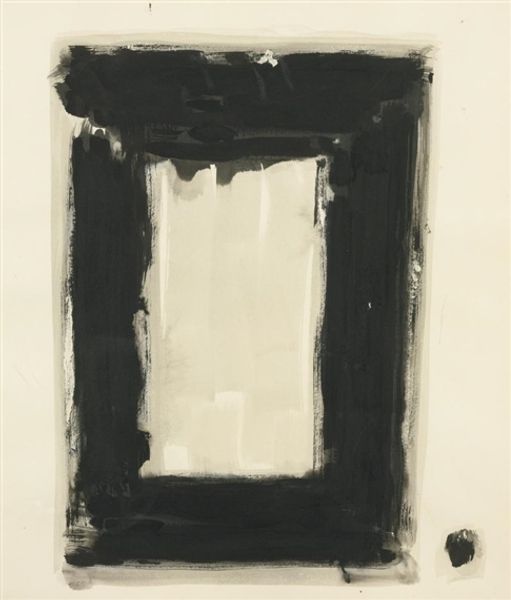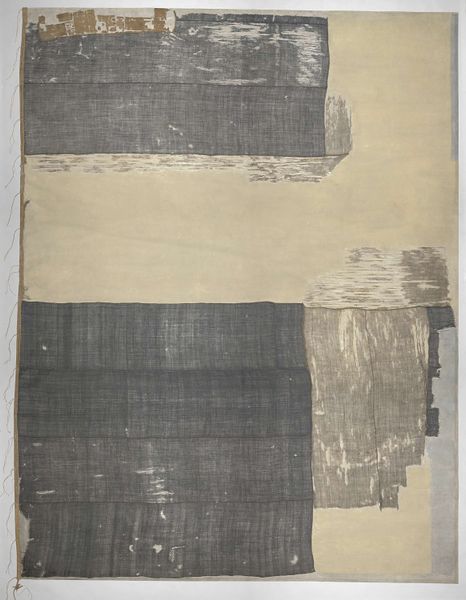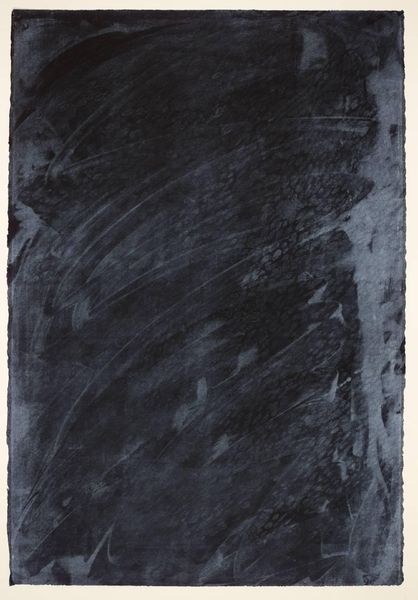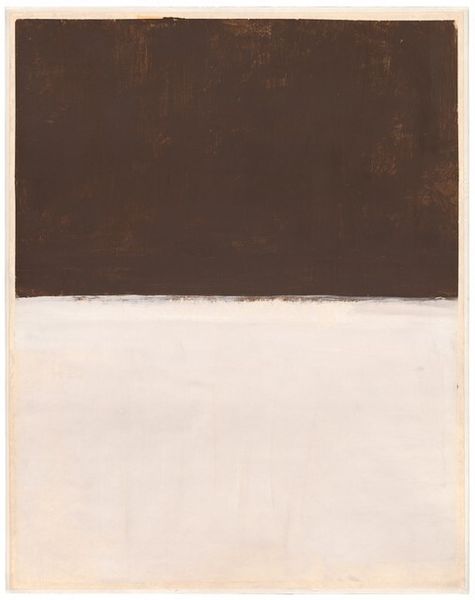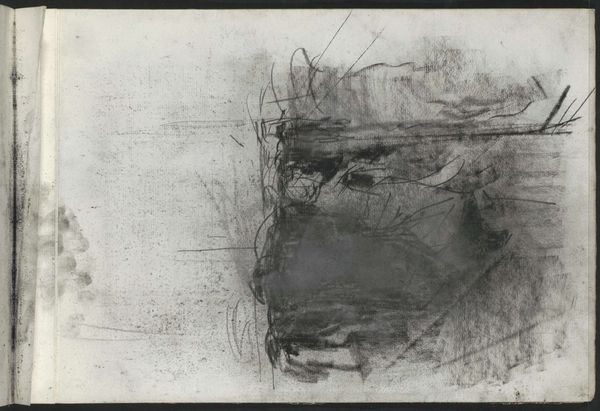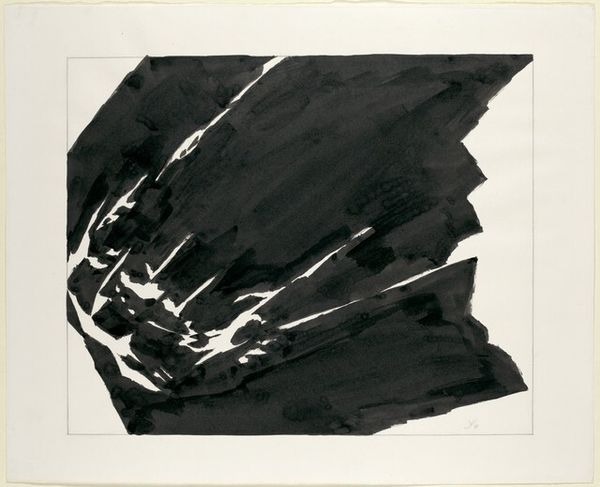
drawing, ink
#
abstract-expressionism
#
drawing
#
form
#
ink
#
ink drawing experimentation
#
abstraction
#
line
Dimensions: sheet: 28.1 × 21.75 cm (11 1/16 × 8 9/16 in.)
Copyright: National Gallery of Art: CC0 1.0
Curator: Here we have an untitled ink drawing by Mark Rothko, created in 1961. What strikes you initially? Editor: Stark. The contrast of the dense, smudged ink blocks against the bare paper and the tentative line work creates an unsettling visual tension. Curator: Rothko, primarily known as a painter, also dedicated time to works on paper. His practice was deeply entwined with the materiality of art making. It is important to consider the availability, expense, and production of materials that influenced his final pieces. Editor: Absolutely. We see here how Rothko is engaging in what feels like raw, immediate exploration through form. Observe how he divides the composition, stacking masses of varying density, one hovering, as if to defy gravity. The texture created solely with ink and paper is remarkably powerful. Curator: Ink offered him immediacy and directness, enabling rapid experimentation. One can imagine the influence of social circumstances. Perhaps a sense of instability and social unrest spurred an exploration of dark tonalities and brooding emotions? How do the materials impact our experience? Editor: It's about more than just the somber colors. The thin washes create atmosphere while denser patches define structure. Notice how the almost-geometric shapes resist solidity; they feel permeable, almost dissolving. The ink bleeds into the paper and refuses crispness. Curator: Given Rothko’s exploration of color field painting, I find this composition speaks of material economies. Ink production and the accessibility of paper during this period influenced the constraints and experimentation possible in these more private, exploratory works. Editor: I understand how production conditions may inform these artistic practices, however, these pieces may emphasize inner states through abstract forms, irrespective of societal elements. The scale allows the viewer to immerse themselves and contemplate their existential condition. Curator: Fair enough. Material and circumstance allow for, even encourage the inner vision, even if they don't dictate it. Editor: Precisely, a springboard rather than a cage. I'll remember the visual quietness as my takeaway from this piece. Curator: And I the ways material limitation can be its own creative prompt.
Comments
No comments
Be the first to comment and join the conversation on the ultimate creative platform.

